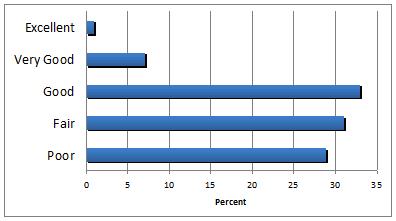
Today I say to you that the challenges we face are real. They are serious and they are many. They will not be met easily or in a short span of time.
But know this, America – they will be met.
On this day, we gather because we have chosen hope over fear, unity of purpose over conflict and discord.
On this day, we come to proclaim an end to the petty grievances and false promises, the recriminations and worn out dogmas, that for far too long have strangled our politics.
President Barack Obama
Inaugural Speech, Tuesday 20 January 2009
I like to read the inaugural addresses of the American Presidents.
For me, they can sometimes signify a time of change and renewal, not just for the United States but for the world in general.
And while the historian Niall Ferguson in his book Colossus identifies the tradition of the State of the Union address as being evocative of Imperial Rome (and all that implies), nevertheless I still have a strong sympathy in the ideals of the founding fathers, and in the constitution of the American political system.
As such, more than a few Presidential speeches go down in history as some of the greatest of our times. And the acceptance speech in January 2009 by Barack Obama, America’s 44th President, was no different, and from a purely personal perspective it made me genuinely hopeful of the advent of a more inclusive form of politics from America.
The State of the Union – SharePoint style
Anyway, the past week or so – in the absence of being able to pay for one of those lofty SharePoint reports issued by the analysts for X amount of dollars – I have been looking at the web trying to find how the “State of the Union” is with SharePoint as of 2009.
Basically, I was looking for some hard evidence of how widely MOSS 2007 is being used and, more importantly, how it is being used by customers.
I wanted to take a look at this because after 2¾ years I wanted to see how MOSS 2007 had been received by the people who actually use it out there.
And there was a practical reason for this.
With SharePoint 2010 on the way I wanted see what had been the relative successes and failures of MOSS 2007, and to be able to assess whether in 2010 there are potentially some genuine improvements on the cards from Seattle.
That, and because I often get asked how SharePoint is being used, and I simply don’t know the answer to this question to any degree of certainty beyond my own personal – limited – experience.
As such, I wanted to find out (if at all possible):
- How SharePoint is being used.
- Whether it is better suited for particular tasks or whether it is capable of addressing an enterprise’s content management needs more widely.
- Its particular functional strengths and weaknesses.
And in doing this, as usual, I came across articles with the seemingly obligatory negative stance on SharePoint.
So what’s the real answer beyond the partisanship and the anecdotes? What is the status of SharePoint usage as of 2009?
State of the Market: Microsoft SharePoint
On the web I came across a survey of AIIM organisational members, and conducted by Carl Frappaolo of Information Architected. [1]
This survey – commissioned by Oracle, I suspect, because the findings actually demonstrate that SharePointis not being widely used at a deep business process level – is actually rather good and indicates that while MOSS 2007 has been tremendously successful in uptake nevertheless it has some distinct gaps and failures in usage which will come as no surprise to thoseworking directly with this platform.
For those interested in the full report you can access it here, but what follows is a summary of the key findings that I found especially useful.
1. SharePoint is rapidly becoming pervasive in the Enterprise
This we know already.
Of 511 responses amongst AIIM’s membership, some 69% (or 353) responded that they were currently using Sharepoint. And of the 31% (or 158) who were not, a further 71 respondents (45% of the negatives) said they will be likely to use the platform in the future.

Thus, 83% of all respondents either currently use or are likely to use SharePoint.
And while the numbers clearly do not tell the full story this is an impressive level of market penetration (and as the survey suggests elsewhere this is primarily for MOSS 2007 rather than SPS 2003).
2. Why Don’t You Use SharePoint?
The 158 responses who said they didn’t use the platform were asked the above question, and here there were some surprising results:
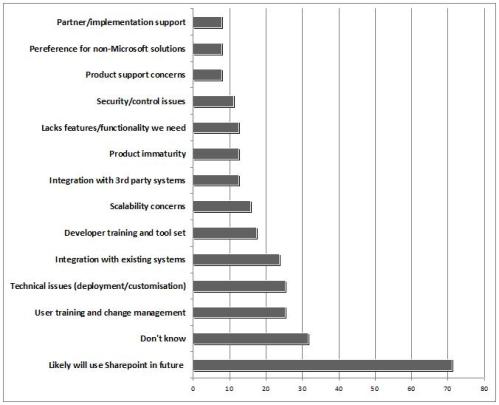
In truth, I’d expected a more negative response than this finding, rather than almost half of respondents saying that they planned to use the system some time in the future!
And other than this, the negatives were what broadly what one might expect around MOSS 2007:
- Customisation/integration figures relatively highly
- There are some scalability and security concerns
- And the usual Microsoft platform issues
And what’s noticeable is that weaknesses in the platform’s feature set was relatively down the scale in terms of non usage. Clearly the platform is not perceived as being functionally that weak by non-users (although see Section 3 below for some further interesting results from actual users).
3. Use of SharePoint functionality
I found this section quite fascinating.
Basically, the overall finding is that while SharePoint is broadly adopted, the survey suggests that currently SharePoint is predominantly used in a somewhat limited fashion within Enterprises, and has not yet achieved the status of a universal ECM.
In terms of where SharePoint (i.e. MOSS 2007) is most broadly used then this seems most focused on:
- Portal Platform
- File Sharing
- Search
With more limited usage and lesser satisfaction in each of the following areas:
- Collaboration & Social Networking
- Web Content Management
- Document Management
- Simple Process Automation
- Business Forms
While the functional areas that appear as outright relative failures in MOSS 2007 are as follows:
- Complex Workflow/BPM
- Records Management
Taking each of the functional areas in turn one gets the following results.
3a. The Good
(a) Portal Platform
As might be expected – i.e. the Portal being one its foundational goals from SPS 2003 – SharePoint is quite widely used as a portal platform for employees, and what’s more in its current iteration it receives a fairly broad vote of confidence from users (although clearly it could do better).

Usage (Partner Portal)

User satisfaction (Partner Portal)
(b) File Sharing
With its tight focus on Office integration, the use of SharePoint for file sharing is the one area where the platform has gained significant traction.
From a functional perspective, its ratings are the best that it scores in the survey although even here it stills fails to achieve a high level of satisfaction amongst the user base.
This ties in with my own feeling that, while good in this area, MOSS 2007 still lacks in usability from a document share perspective. (And one hopes that the advent of the ribbon in SharePoint 2010 will go some way to address this.)

File Sharing (Usage)
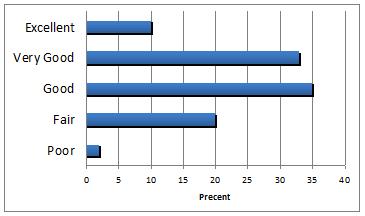
File Sharing (User Satisfaction)
(c) Search
While positive, the results for SharePoint search surprised me as there is little doubt that MS Search in MOSS 2007 is a well conceived function and yet it only rates as “good” in this survey.
However, on further reflection its quite possible that SharePoint Search suffers from the fact that often little or no attention is paid to search configuration in implementations and even less to ongoing search management and tuning.
Without this attention most search engines tend to perform under par compared to their true ability, and yet arguably they are one of the key functions to support a coherent information architecture.
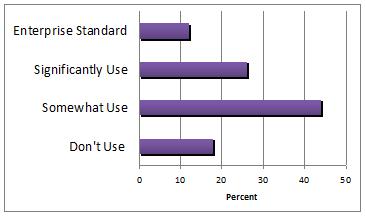
Search (Usage)

Search (User Satisfaction)
3b. The (Relatively) Indifferent
(d) Collaboration & Social Networking
From a marketing standpoint collaboration is one of SharePoint’s major sales points, but here rates little more than good and relatively low in enterprise adoption.
And while personally I feel that the collaboration tools in MOSS 2007 justify this overall rating, the less said about the current support for social networking tools the better.
In general, I feel that support for collaboration is a tough nut to crack in the Enterprise space. Clearly there is some room for improvement in SharePoint 2010, and it is simply a case of watching and waiting to see what’s to come in this area.

Collabor-ation (Usage)
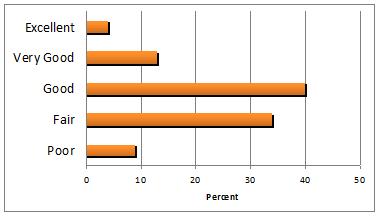
Collabor-ation (User Satisfaction)
(e) Web Content Management
As is well known, WCM in MOSS 2007 was a new addition to the platform (supplanting MCMS 2002 as a standalone product), and as such it performs creditably but with some notable issues (e.g. browser & accessibility support and design integration).
What’s interesting from the survey is that SharePoint usage for WCM is relatively limited in the organisation’s surveyed here and it receives a predominantly “good to fair” rating.
Currently, I feel this is a fair judgement and it certainly ties in with Gartner’s latest magic quadrant assessment of WCM, which places Microsoft as one of the “challengers” in this space rather than a market leader.
And while I feel that while the WCM model underlying MOSS is, in fact, quite elegant and easy to use for (non-technical) end users, there are nevertheless significant customisation challenges in WCM implementation.

WCM (Usage)
 WCM (User
WCM (User
satisfaction)
(f) Document Management
Document Management has featured in SharePoint since SPS 2001, and while I think the model is fairly good (and certainly better in MOSS 2007 than SPS 2003), it nevertheless tends to get a rough ride from the analysts.
In terms of the results here both its usage and satisfaction rating is slightly above that of WCM, but nevertheless in this survey Document Management still lags the relatively good functional areas.
One can’t help but feel that with ownership of the (Office desktop) SharePoint should really rate better in this area, but equally I wonder whether this says as much about the state of Electronic Document Management (EDM) in general as it does about SharePoint. From my – admittedly limited – experience, I think many organisations are some way from adopting the true discipline required to practice effective EDM, and instead are still generally reliant on the more chaotic file share as a means of “managing” electronic information more widely throughout the Enterprise. Thus, it’s a fair cultural shift and a significant governance leap to embrace this change in practice successfully.
But equally I think there are some valid usability issues in interacting with SharePoint lists (such as Document Libraries) in the browser, and one hopes that SharePoint 2010 will address this positively.

Document Management (Usage)

Document Management (User Satisfaction)
(g) Simple Process Automation
Here SharePoint does seem to have some potential strengths as the platform offers some of the plumbing to automate simple business process tasks.
And yet the feature gets a reasonable but not outstanding rating, I suspect because of the related requirement for customisation and integration (of which it is suggested in the survey elsewhere is relatively difficult to do in MOSS 2007; or leastways it requires a certain level of developer skill to be present).
Hence I suspect this rating is not so much a failure of SharePoint per se, but simply a reflection of the effort and energy taken to achieve such initiatives within any Enterprise using a platform approach.
And in case it is possible to argue that “simple” is an oxymoron when it comes to such things, and so we get the following results:

Simple Business Process Automation (Usage)
 Simple Business Process Automation (User Satisfaction)
Simple Business Process Automation (User Satisfaction)
(h) Business Forms
I’d be the first to admit that I am no expert on business forms using Infopath 2007 within SharePoint, but we have a lead developer at Storm that has used Infopath extensively and he says that it is difficult to implement. His ability on SharePoint is such that I trust his judgement implicitly when he steers us clear of using it within MOSS 2007 implementations.
But what’s interesting from this survey is that while SharePoint usage in this area scores relatively low within the Enterprise, the satisfaction ratings are no worse in implementation than the other middle range features.
Thus, while SharePoint clearly doesn’t (as yet) compete with the point solution offerings out in this particular space it is quite possible that it will do so in SharePoint in what is arguably a critical functional area to support.

Business Forms (Usage)
Business Forms (User Satisfaction)
3c. And the Ugly
(i) Complex Workflow/BPM
Again I have no claims to any great expertise here, and so I’ll simply state that in this survey SharePoint currently receives a relatively poor rating in this area both for usage and for satisfaction, and having relatively limited experience of either the market area or implementations of this nature I have no real opinion on why.
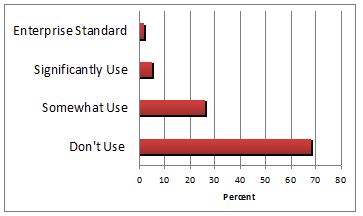
Complex Workflow & BPM (Usage)
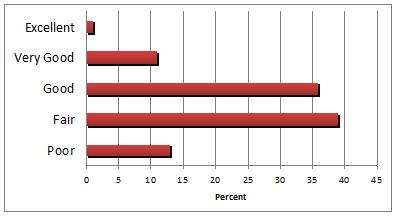
Complex Workflow & BPM (User Satisfaction)
(j) Records Management
This area has received much criticism in MOSS 2007, and yet arguably this sort of standards compliance in information management has undergone something of a renaissance in recent years due to Sarbannes Oxley in the US and the Freedom of Information Act in the UK (and probably other similar governmental initiatives elsewhere).
Originally when MOSS 2007 was first released it was reputedly going to be the subject of a major point release upgrade in this area, but somehow it never happened. And, as far as I know, the functionality found in SharePoint is not well regarded by experts in the records management field.
And this survey seems to support this opinion, as SharePoint scores low in usage and fair in satisfaction.
Thus, it seems possible to say that Records Management has a long way to go in SharePoint to become a viable and widely used feature.

Records Management (Usage)
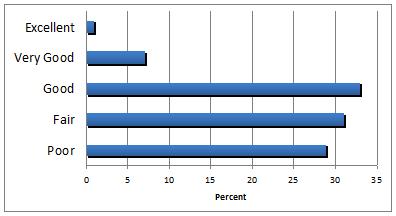 Records Management (User Satisfaction)
Records Management (User Satisfaction)
And Finally …
From the findings in this survey that are given here, I feel that in general the State of the Union with SharePoint is nothing like as negative as the platform’s many detractors would have you believe. But equally they do not present a universally positive picture, and it does indeed seem to be a case of “good, but could do better” in quite a few areas.
Thus, while on a generic level there are signs that SharePoint (aka MOSS 2007) struggles within the Enterprise in places, there are also distinct positives from this survey that one can take away and reflect on for future implementations.
On balance, therefore, I feel these are important findings as we head towards a SharePoint 2010 release.
At the very least they provide some hard statistics – courtesy of the AIIM survey and Information Architected – to benchmark the relative functional improvements that we will hopefully see within the next version.
